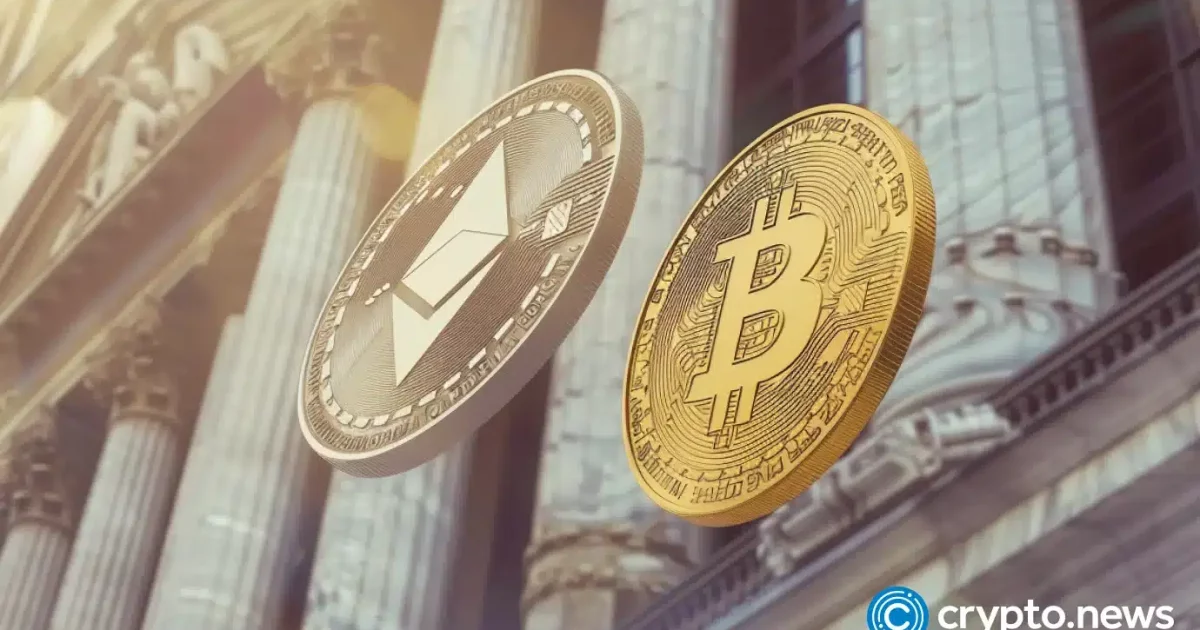What should you consider when choosing between ETP vs ETF for exposure to digital assets like Bitcoin and Ethereum?
The financial world can be a tricky place, full of similar-sounding terms and jargon that can easily leave you scratching your head. Just when you think you’ve got a handle on things, another acronym pops up, adding to the confusion.
Two of the most commonly mixed-up terms are exchange-traded product (ETP) and exchange-traded fund (ETF). They might sound almost identical, but they play different roles in the investment arena.
Let’s explore the world of ETPs vs ETFs, shedding light on what sets them apart and why it matters to you as an investor.
What are ETPs?
Exchange-traded products, or ETPs, are a broad group of financial tools that you can buy and sell on stock exchanges, just like regular stocks. They’re designed to follow the value of different assets, including crypto, commodities, and indices.
One of the cool things about ETPs is that they let you invest in specific markets or assets without actually having to own those assets. For example, you could gain exposure to Bitcoin (BTC) without needing to buy Bitcoin directly.
In crypto, the most common ETP is the exchange-traded fund, which we’ll dive into shortly. But ETPs also include other types, like exchange-traded notes (ETNs) and exchange-traded commodities (ETCs), each coming with its own set of risks and benefits.
For instance, a crypto ETN might track the price of Bitcoin or a broader index of digital assets.
But remember, ETNs are actually debt instruments, meaning they carry the risk of the issuer’s creditworthiness. If the issuing bank runs into financial trouble, the value of your ETN could take a hit.
On the flip side, ETCs are more like ETFs but focus specifically on individual commodities or a group of them.
Unlike ETNs, ETCs are usually backed by the actual asset, which provides some extra security since you’re indirectly exposed to the commodity without needing to own it.
In Europe, you can find many crypto ETPs listed on major exchanges like the SIX Swiss Exchange and Germany’s Deutsche Börse. These products give you exposure to assets ranging from Bitcoin and Ethereum (ETH) to lesser-known cryptocurrencies.
Plus, these products are regulated, offering a level of security and trust that’s often missing in the wild world of crypto.
What are ETFs?
ETFs are a type of ETP, meaning they belong to a larger family of financial products that you can trade on an exchange.
Think of ETFs as a smaller group within the broader ETP category. Just like how all squares are rectangles, but not all rectangles are squares, all ETFs are ETPs, but not all ETPs are ETFs.
Crypto ETFs have gained a lot of attention lately, especially after the first Bitcoin ETFs launched in the U.S. in January 2024. These ETFs made it easier for traditional investors to get into the crypto market through a regulated and familiar product.
For example, these spot Bitcoin ETFs let you directly invest in Bitcoin without actually buying Bitcoin, making it simpler for traditional investors to enter the crypto space.
Recently, Ethereum ETFs also hit the U.S. market, offering similar exposure to Ethereum as Bitcoin ETFs do for Bitcoin.
Around the world, other countries have launched their own crypto ETFs too. Canada, for instance, has been ahead of the game, offering Bitcoin and Ethereum ETFs since 2021.
Key differences between ETPs and ETFs
Structure
ETPs
ETPs act as an umbrella term for various exchange-traded investment vehicles that track crypto assets. These include ETFs, ETNs, and ETCs. Some ETPs might even include a mix of crypto and blockchain-related stocks, giving you broader exposure to the crypto market.
ETFs
Crypto ETFs are a specific type of ETP that tracks the performance of a group of digital currencies or a single cryptocurrency. For example, a crypto ETF might hold a portfolio of top cryptocurrencies like Bitcoin and Ethereum or just focus on one.
Risk exposure
ETPs
The risk with crypto ETPs varies depending on their structure. Some crypto ETPs, like ETNs, might not actually hold the underlying digital assets but instead represent a debt obligation. This means their value is tied not only to the crypto market but also to the creditworthiness of the issuer.
ETFs
Crypto ETFs tend to be less risky compared to other crypto ETPs because they usually hold the actual cryptocurrencies in their portfolio. This means the value of the ETF is directly linked to the digital assets it holds, rather than to the financial health of an issuing institution. As a result, investors in crypto ETFs are more directly exposed to the price movements of the underlying cryptocurrencies.
Liquidity
ETPs
Liquidity in crypto ETPs can vary. Some ETPs, especially those tracking lesser-known digital assets, might have lower trading volumes, leading to wider bid-ask spreads. This can make it more expensive for investors to buy or sell shares.
ETFs
Crypto ETFs, particularly those tracking major cryptocurrencies like Bitcoin or Ethereum, tend to be more liquid. High trading volumes make it easier for investors to buy or sell shares without drastically affecting the market price. This liquidity is essential for those who want the flexibility to quickly react to changes in the fast-paced crypto market.
Regulatory oversight
ETPs
Crypto ETPs are subject to different levels of regulatory oversight, depending on their structure and the country where they’re offered. Some ETPs, like ETNs, might face different regulatory scrutiny compared to ETFs, which can impact transparency and investor protection.
ETFs
Crypto ETFs usually have more stringent regulatory oversight, especially in markets like the U.S.. Regulatory bodies like the SEC have specific rules for ETFs, requiring higher levels of transparency and reporting. For investors, this means crypto ETFs are generally considered safer and more reliable than other types of crypto ETPs.
Use cases: when to choose ETPs vs ETFs
When it comes to investing in the crypto market, both ETPs and ETFs offer unique advantages, but they serve different purposes depending on your investment goals and risk tolerance.
Knowing when to choose an ETP over an ETF, or vice versa, can make a big difference in how your portfolio performs.
Choosing ETPs
Since ETPs include a variety of products like ETNs and ETCs, they offer more flexibility in the types of assets you can invest in. For example, if you want to invest in a product that tracks a broader spectrum of the crypto market, including less popular digital assets or even a mix of cryptocurrencies and blockchain-related stocks, an ETP might suit your needs better.
Choosing ETFs
On the other hand, if you’re looking for something more straightforward and generally safer, a crypto ETF could be the way to go.
ETFs are known for their transparency, liquidity, and regulatory oversight, which makes them a popular choice for investors who want direct exposure to major cryptocurrencies like Bitcoin and Ethereum.
For instance, if you want to invest in top cryptocurrencies but don’t want to deal with the complexity of holding multiple coins yourself, a crypto ETF provides a simple and efficient way to do that.
Final thoughts
Ultimately, whether you choose an ETP or an ETF depends on your investment goals, risk tolerance, and the specific exposure you’re seeking in the crypto world.
By learning the nuances of these products, you can better understand the complex world of crypto investments and make choices that align with your financial objectives.




